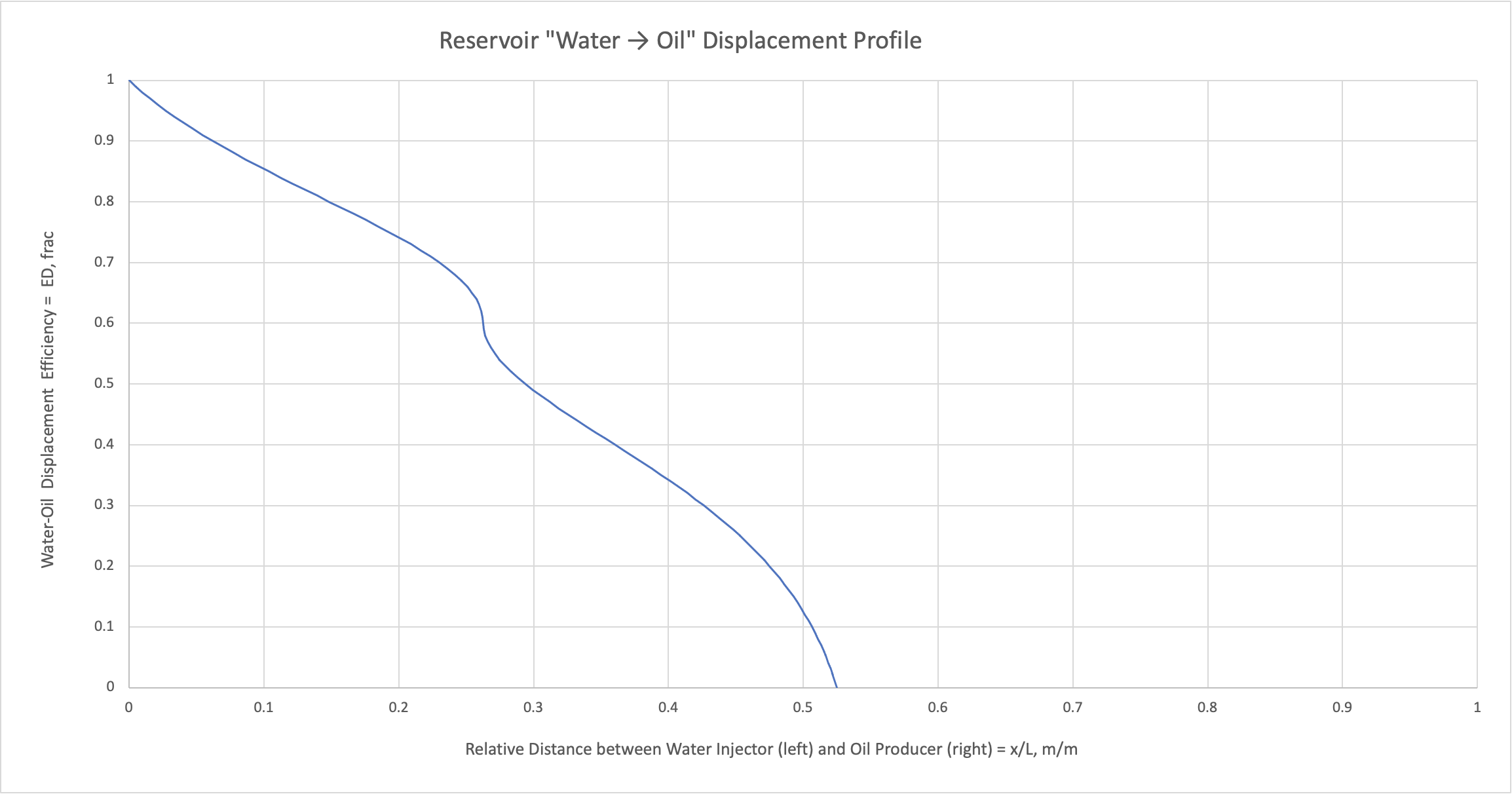Ideally balanced water + dead oil 1D waterflood model without gravity and capillary effects.
|
|
|
where
\displaystyle s= E_D = \frac{s_w - s_{wi}}{1-s_{wi}-s_{or}} | water → oil displacement efficiency |
q | sandface injection rate, assumed equal to sandface liquid production rate |
\phi(x) | reservoir porosity |
\Sigma(x) = h \, D | cross-section area available for flow |
h(x) | reservoir thickness |
D(x) | reservoir width = reservoir length transversal to flow |
\displaystyle f = \frac{1}{1+M_{ro}/M_{rw}} | in-situ fractional flow function |
| relative oil mobility | |
M_{wo} = k_{rw}(s_w)/\mu_w | relative water mobility |
Approximations
In many practical applications (for example, laboratory SCAL tests and reservoir proxy-modeling) one can assume constant porosity and reservoir width:
|
|
|
where
\displaystyle t_D = \frac{V_\phi \, t}{q} | dimensionless time |
\displaystyle x_D = \frac{x}{L} | dimensionless distance |
L | reservoir length along x-axis |
V_\phi= \phi \cdot h \cdot D \cdot L | reservoir pore volume |
The equation
(4) can be explicitly integrated:
| (7) | x_D(s) = \begin{cases}\dot f(s) \cdot t_D, & \mbox{if } s < s^*\\ 2 x^*_D- \dot f(s) \cdot t_D, & \mbox{if } s \geq s^*\end{cases} |
where
s^* | critical saturation where fractional flow function reaches inflection point: \ddot f(s^*) = 0 |
x^*_D= f(s^*) \cdot t_D^* | "inflection" distance |
t_D^* | "inflection" time |
\displaystyle \dot f(s) = \frac{d f}{ds}, \, \, \ddot f(s) = \frac{d^2 f}{ds^2} | first and second derivatives of the fractional flow function |
Algebraic equation
(7) can be used to find a solution of
(4) in terms of saturation over time and distance:
s(t,x) (see Fig. 1).
Fig. 1 – Sample case of reservoir saturation profile s(t,x) capturing themoment when water front is still in a mid-way t the producing well (sitting at x_D = 1 \Leftrightarrow x = L) |
See Also
Petroleum Industry / Upstream / Subsurface E&P Disciplines / Dynamic Flow Model / Reservoir Flow Model (RFM)
[ Production / Subsurface Production / Reserves Depletion / Recovery Methods ]
